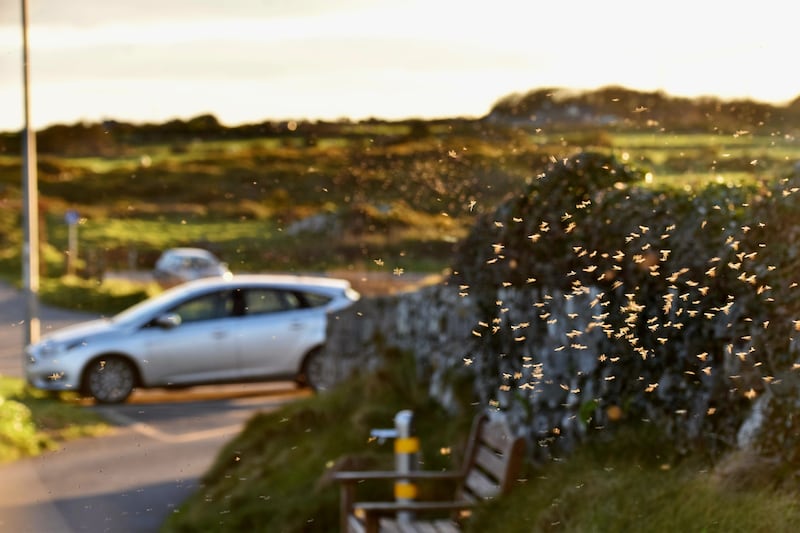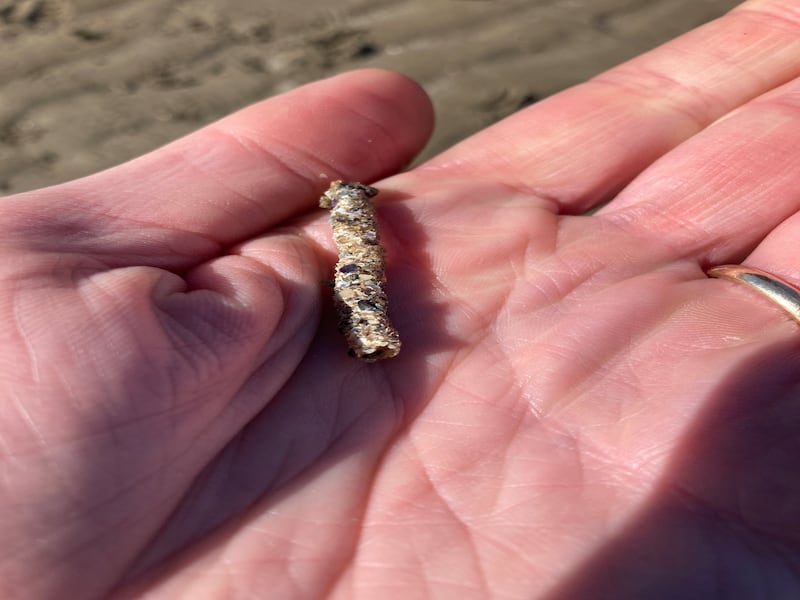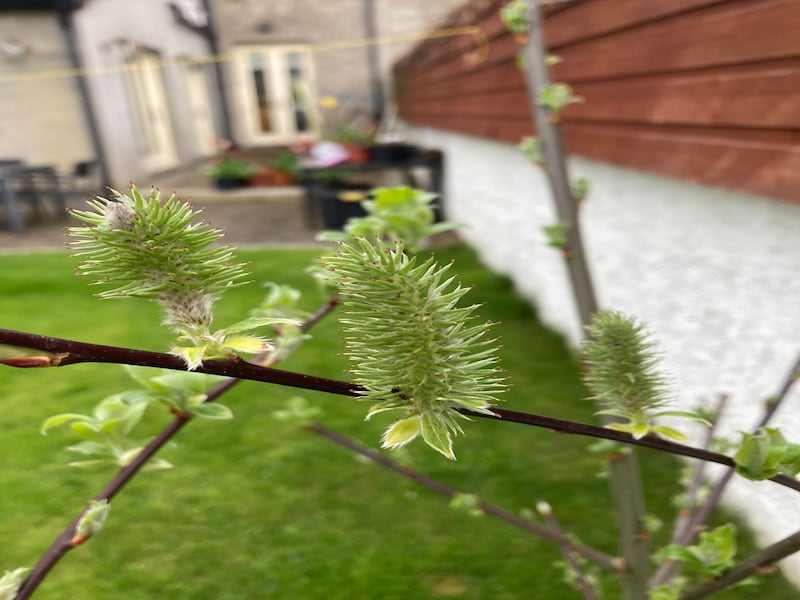We found this interesting creature while walking on Dogs Bay, Connemara. Any idea what it could be? Roisin Valverde, Dublin 8
This is the flightless adult female belted beauty moth. It is a very rare moth indeed and is found only in west Galway and west Mayo. The male can fly and is quite distinctive, with a furry head and silvery grey and brown stripes on the forewing. The males can be observed by day in large numbers in areas such as sand dunes, where their food plants such as bird’s food trefoil, burnet rose and creeping willow occur. The females may be seen on the fenceposts, as in your picture, because they crawl up to the top and release pheromones to attract the males flying nearby. They overwinter as a pupa.

These insects were an unseasonal feature on March 15th. The sun shone with a light breeze and a temperature of 12 degrees. I presume they are not mayflies! But what are they? Larry Dunne, Co Wexford
They are winter gnats, Trichocera, which look like very small crane flies. There are not many insects on the wing in winter and early spring, but just a little sunshine will draw out swarms of these tiny dancers. The swarms consist mostly of males – delicate leggy creatures – dancing to impress the females. The larvae feed on decaying vegetation and pupate in the soil.
READ MORE
This bird recently landed on the balcony of my daughter’s flat in Terenure, Dublin. It had a tag on its leg and seemed to be quite tame. We couldn’t identify it. Muireann Ni Mhorain
This is a hybrid between a male goldfinch and a canary hen, which has been bred by cagebird breeders and has a closed-ring on its leg placed there by the breeder. These are often called mules and are almost always sterile and so cannot breed themselves. They are bred for their wonderful colours and for the beautiful song of the cock birds. This one must have escaped from its breeding place.

My son spotted these sand-covered jelly-like tubes on Howth beach at Easter. There was a deposit of them all along the beach at about 20 metres from the high tide line. They reminded me of the cases of caddis fly larvae found in fresh water. Are they an egg or larvae casing? Eoin Cotter, Dublin
These are the tubes of the sand mason, which is a type of bristle worm. Each one lives inside a protective tube made of sand grains stuck together with mucus. This sticks up from the sand at the bottom of the sea. When the worm is feeding, a crown of feathery tentacles emerges from the top and waves about, trapping any tiny food particles that are present in the water. The tentacles are quickly drawn back inside if the sand mason is disturbed. These tubes were torn loose by storms, washed up on the beach and are now devoid of their contents.

We have a plant that began growing in our garden last year. Now it has these flowers/buds on it. Any suggestions as to what it is? Jenny Hughes, Dublin
You have just acquired a native tree for your garden. This is a goat willow, Salix caprea. This species, like all willow species that grow here, is dioecious, which means that male and female flowers grow on separate trees. These are female catkins that have come out before the leaves open, which is typical of this species. They will be pollinated by wind-blown pollen from a male tree in the vicinity and produce tiny wind-dispersed seeds that colonise widely. This species is excellent for insect biodiversity.
Please submit your nature query, observation, or photo with a location, via irishtimes.com/eyeonnature



















